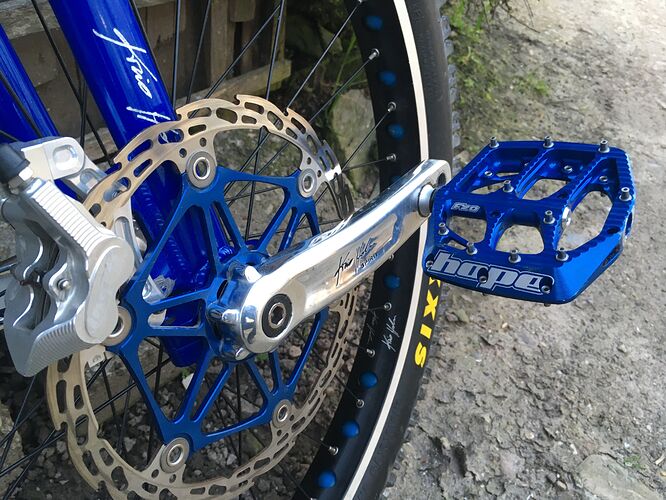Hope F20 – I have several pairs of these on both unicycles and bikes. These are my latest acquisition – the blue goes nicely with the KH blue and the blue Hope brake rotor. These have pretty aggressive pins and hold your feet very firmly, a downside is that they can also mess up the back of your leg pretty badly 
Pros:
- Machined from solid aluminium and should be pretty unbreakable. I have ones which have taken a fair beating.
- The end of the axle is protected inside the pedal body so strikes on the side shouldn’t affect the bearings or spindle.
- Pins hold your feet pretty firmly in place especially with 5-10s.
- Fully serviceable and service kits readily available.
- Look pretty nice in my opinion
- Available in six colours (anodised), the blue seems to match KH blue pretty well.
- They’re Hope

Cons:
- Expensive
- The pins can cut you up…
- Need special socket for getting in to the Nyloc nut on the spindle end.
